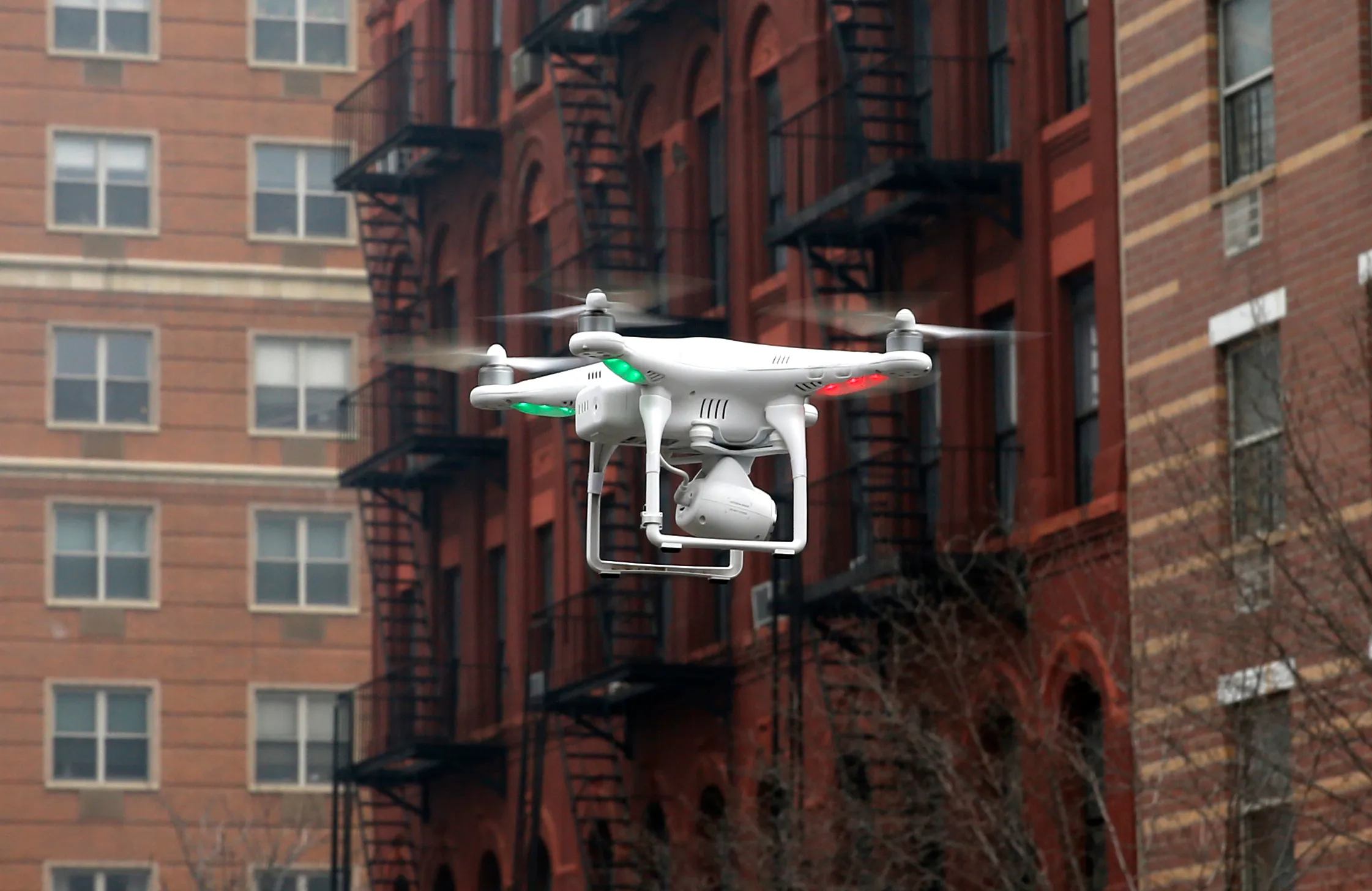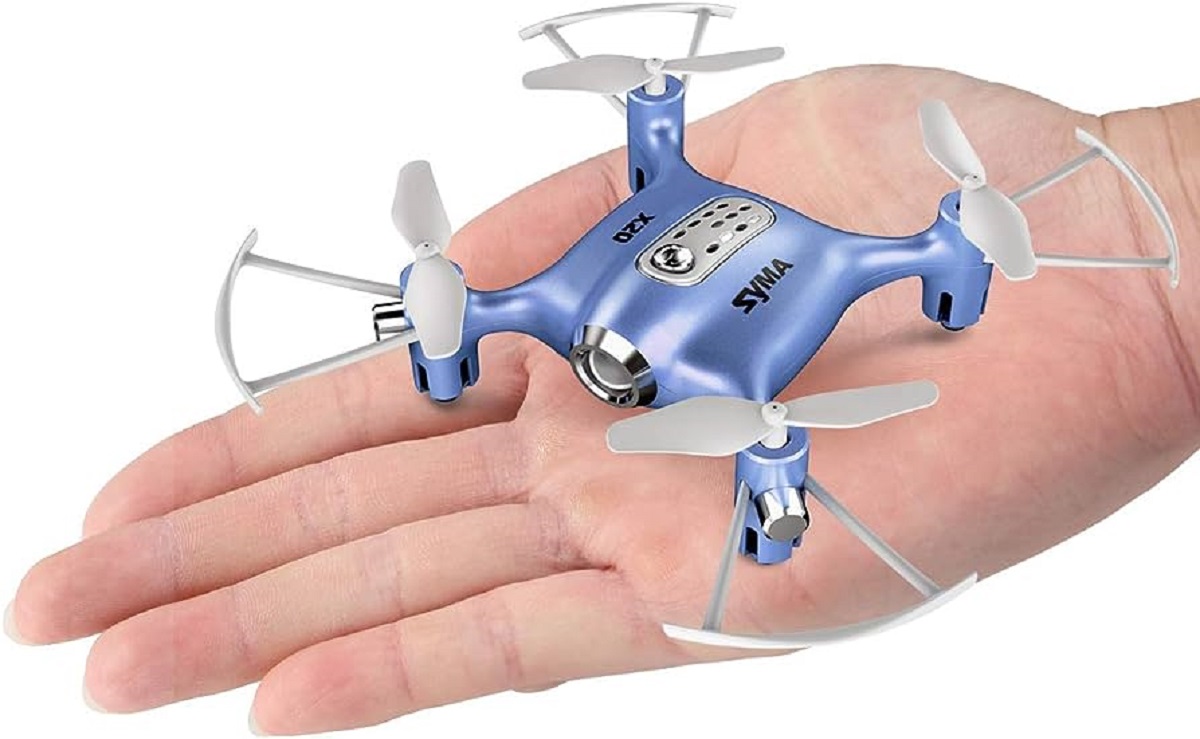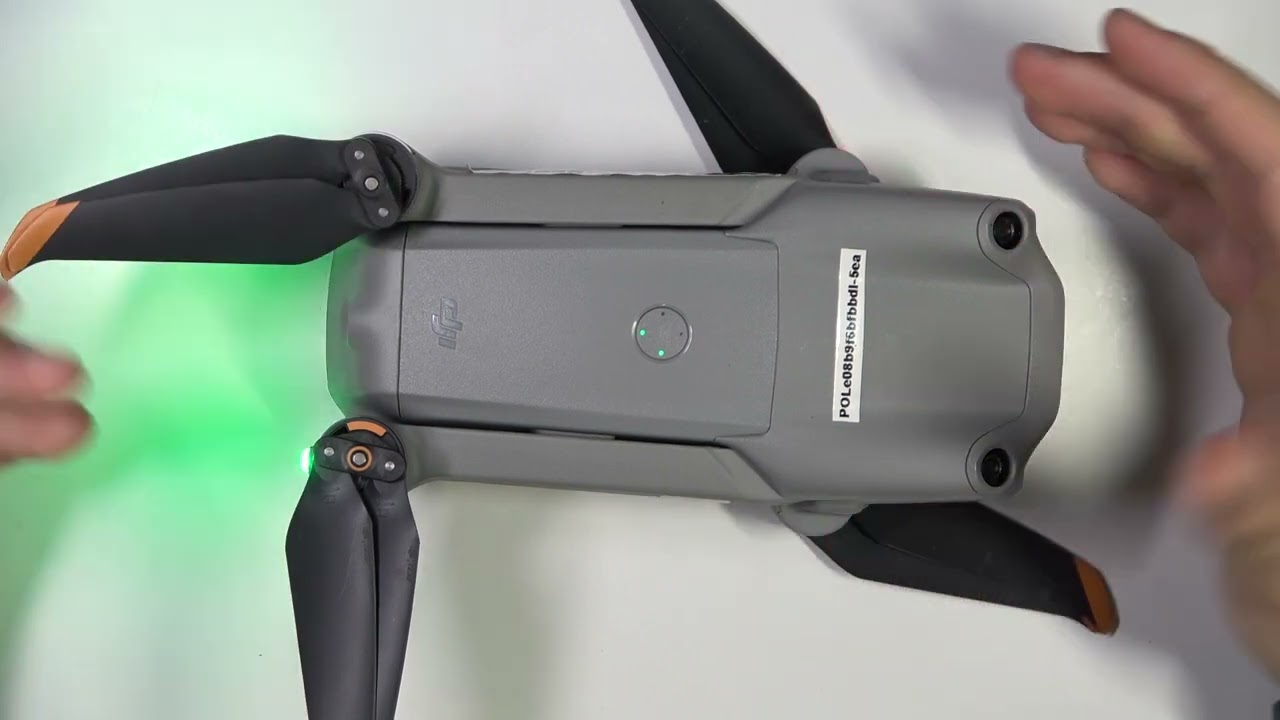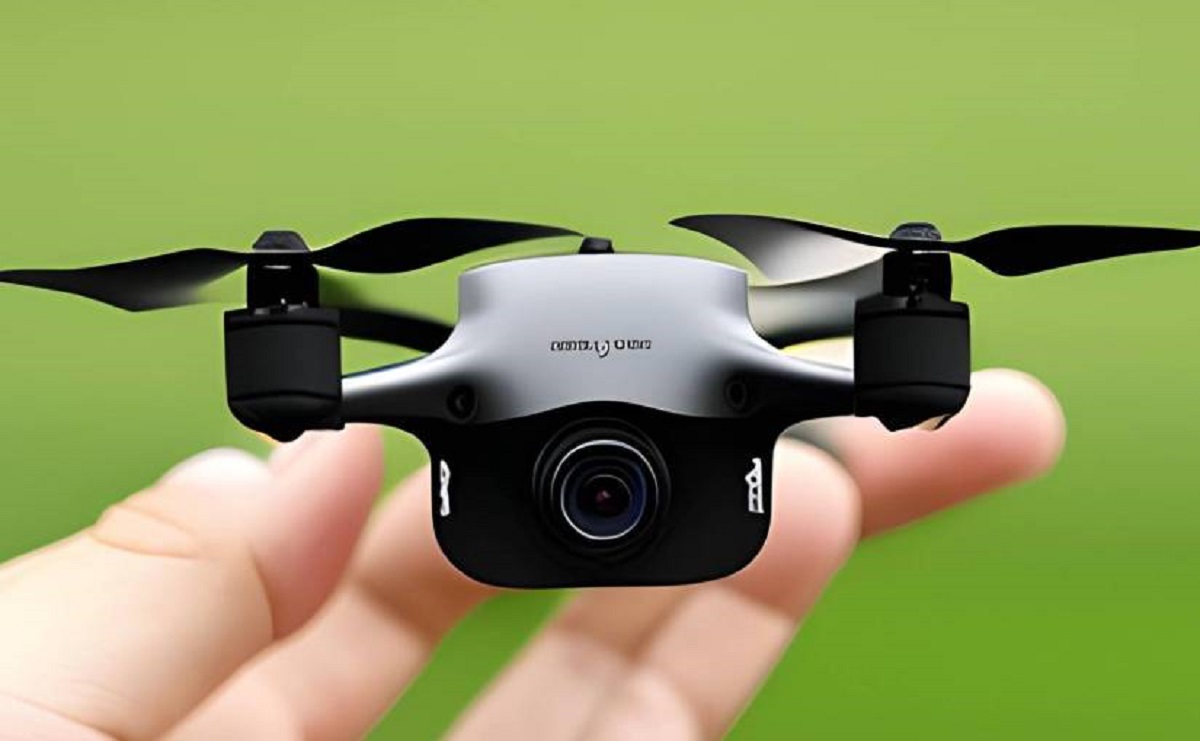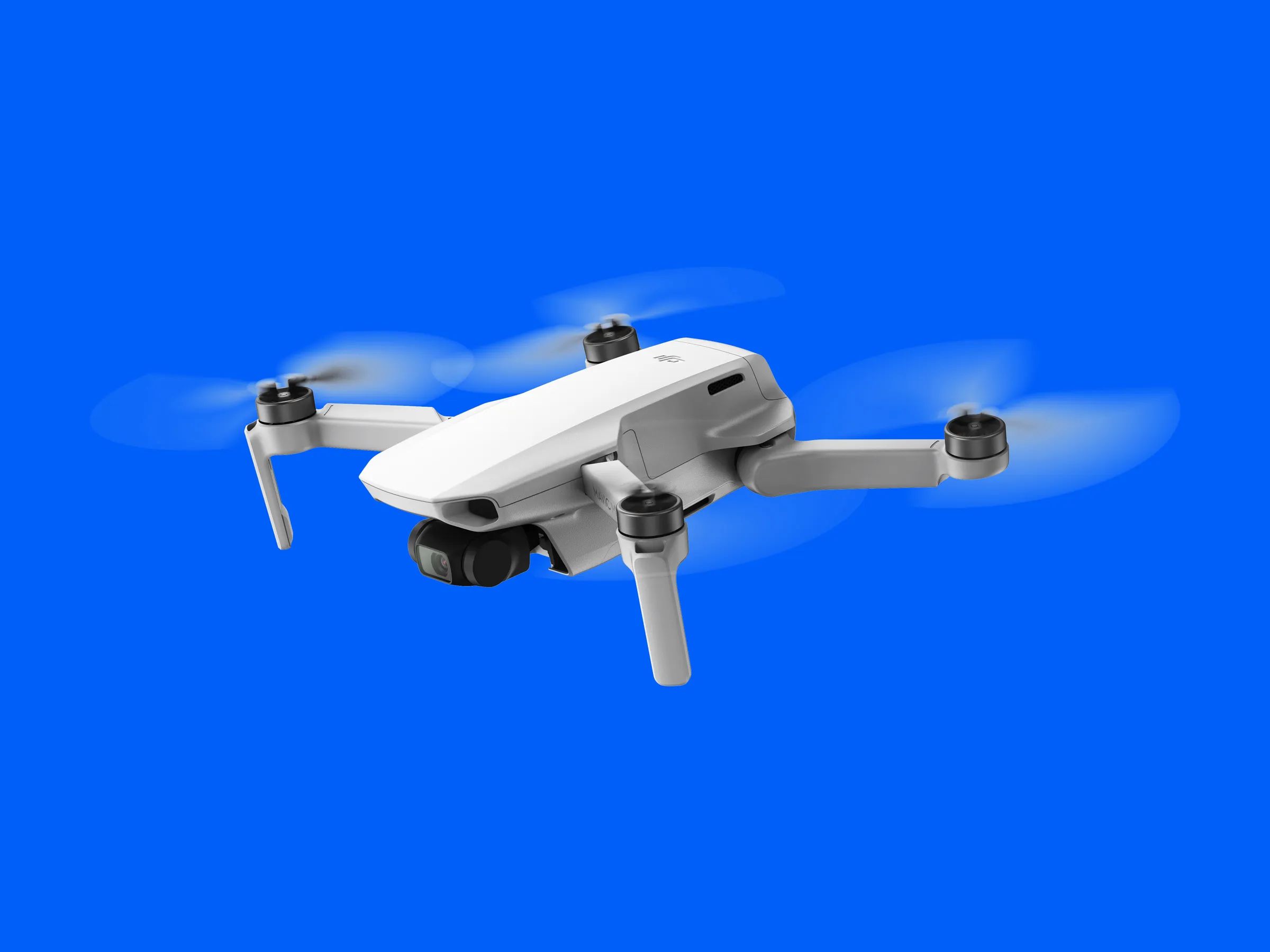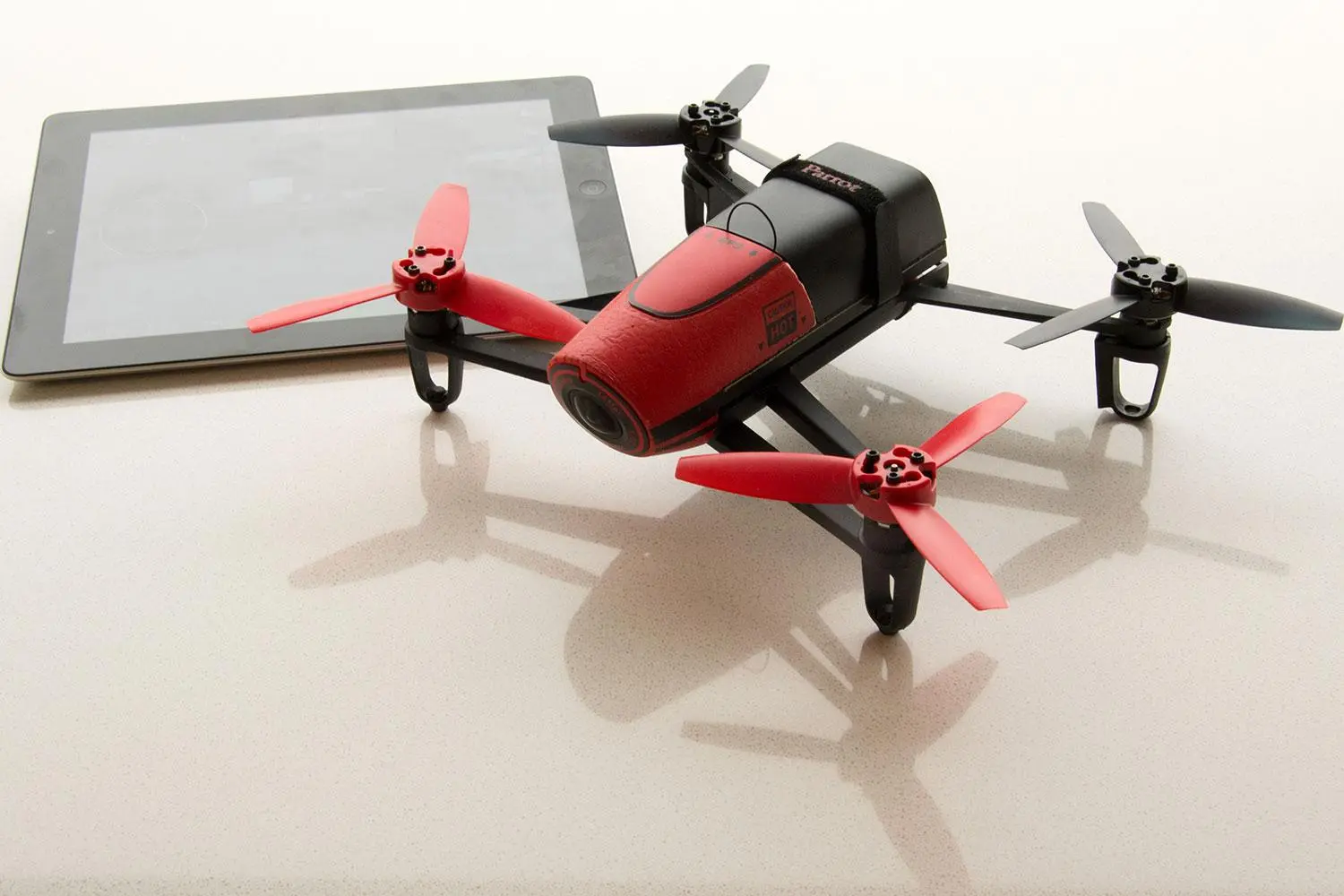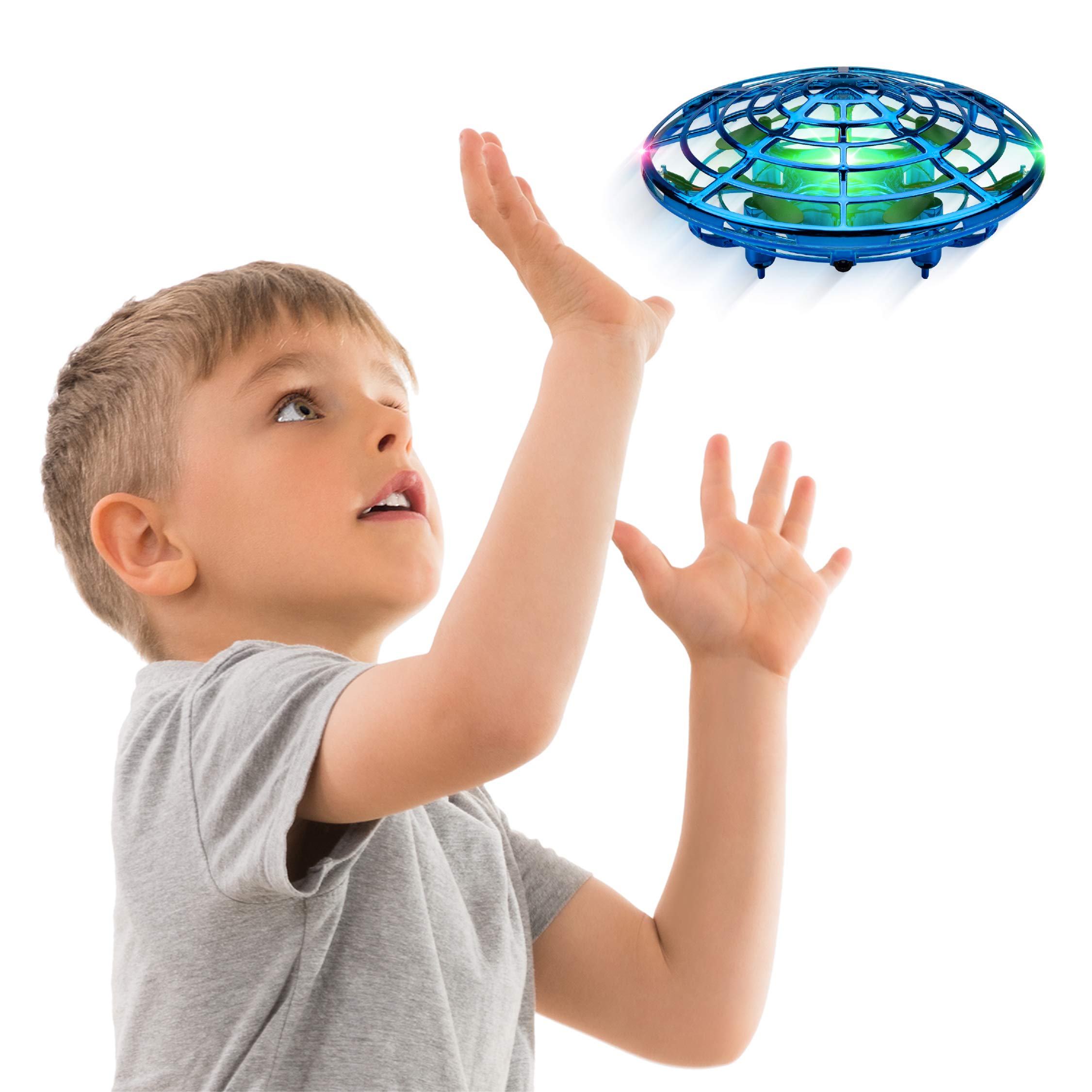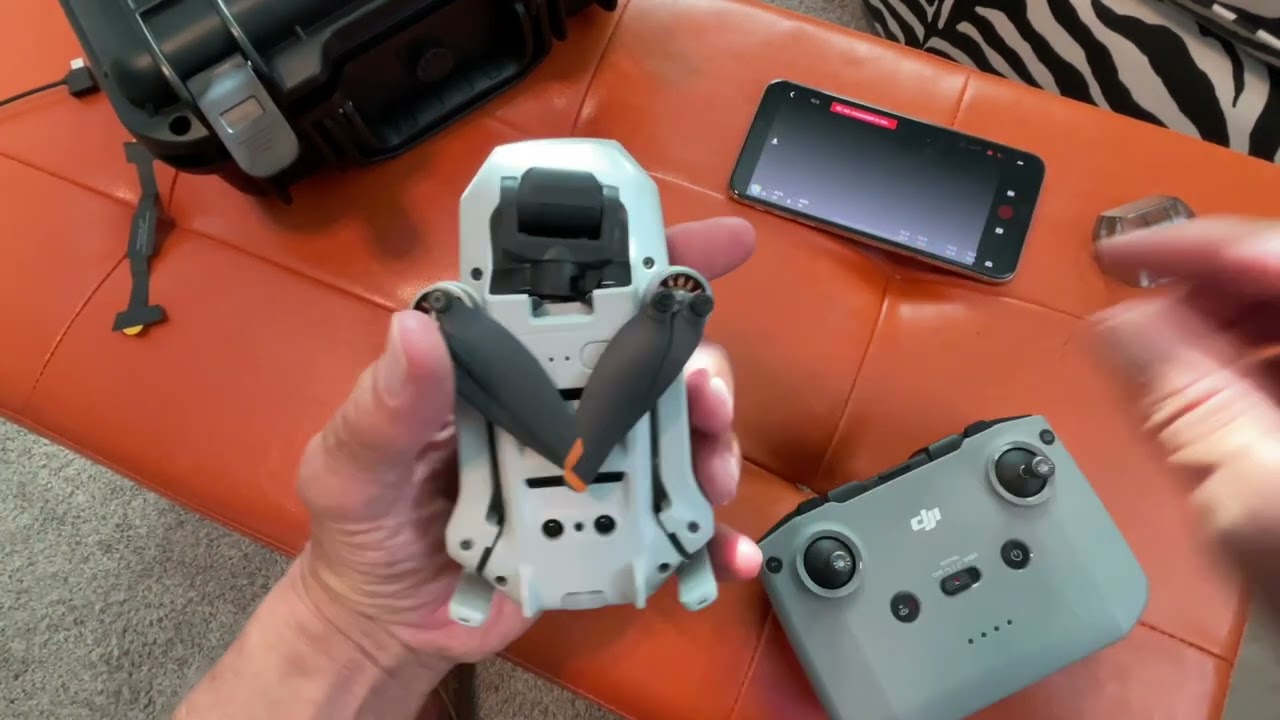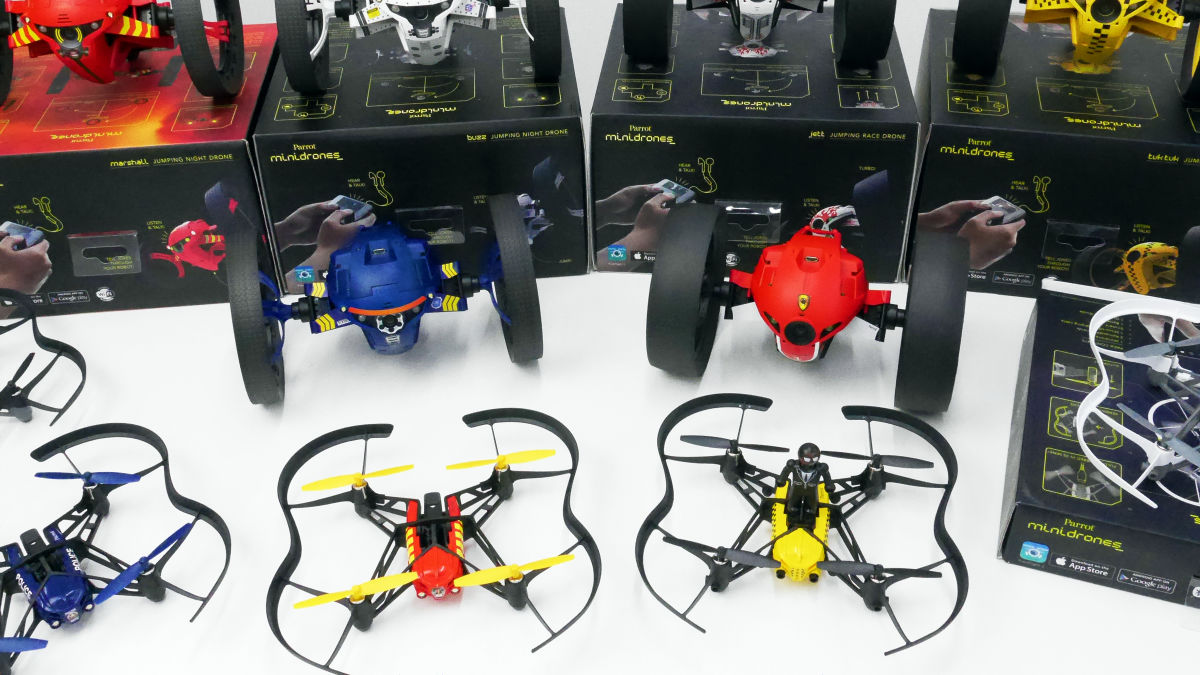Introduction
Drones have become increasingly popular in recent years, with their versatility and accessibility appealing to both hobbyists and professionals alike. However, as drone technology advances and their capabilities expand, concerns about privacy, security, and safety have also grown. There may be situations where it becomes necessary to stop a drone from flying, whether it is because the drone is operating in a restricted area or poses a potential threat.
In this article, we will explore various methods to stop a drone from flying, ranging from physical interventions to technological solutions. We will also consider legal considerations and precautions to ensure that any actions taken to stop a drone comply with regulations and do not infringe upon the rights of drone operators.
It is important to note that interfering with a drone without proper legal justification may be considered illegal and can have serious consequences. Therefore, it is crucial to thoroughly understand the laws and regulations related to drone operation in your jurisdiction before attempting any action to stop a drone.
Furthermore, it is important to emphasize that the information provided in this article is for educational purposes only. Always consult with legal professionals or relevant authorities to ensure compliance with local laws and regulations.
Now, let’s delve into the world of drones, the legal considerations surrounding their operation, and explore the various methods available to stop them from flying.
Understanding Drone Technology
Before we can effectively explore methods to stop a drone from flying, it is essential to have a basic understanding of how drones function and the technology behind them.
A drone, also known as an unmanned aerial vehicle (UAV), is an aircraft that can be remotely controlled or autonomously operated without an onboard pilot. Drones range in size, from small consumer models to large industrial-grade machines. They are equipped with various components that allow for controlled flight and the capture of aerial imagery.
The key components of a drone include:
- Frame: The structure that holds all the necessary components together and provides stability during flight.
- Motors and Propellers: These generate thrust and propulsion, enabling the drone to move in different directions.
- Battery: Drones are powered by rechargeable batteries that supply electricity to the motors and other electronics.
- Flight Controller: This is the brain of the drone, responsible for processing flight commands, maintaining stability, and adjusting motor speeds.
- Sensors: Drones often come equipped with various sensors, such as GPS, accelerometers, gyroscopes, and altimeters, which provide data on the drone’s position, orientation, and altitude.
- Camera/Gimbal: Many drones have built-in cameras or gimbals to capture photos and videos from the air.
- Transmitter and Receiver: These components enable communication between the drone and the remote controller, allowing the operator to control the drone’s flight.
With advancements in technology, drones now offer various features and capabilities. These include autonomous flight modes, obstacle avoidance systems, long flight times, and advanced imaging capabilities. Understanding the functionalities of different drone models can help in devising effective strategies to stop them from flying when necessary.
It is important to note that different drones operate under different regulations, depending on their size, weight, and purpose. This means that the restrictions and legal considerations surrounding drones may vary from one country or region to another.
Now that we have a foundational understanding of drone technology, let’s dive deeper into the legal considerations and restrictions associated with drones.
Legal Considerations and Restrictions
Operating a drone comes with a set of legal considerations and restrictions that must be adhered to in order to ensure safety, privacy, and compliance with local laws. Before attempting to stop a drone from flying, it is essential to understand the legal framework surrounding drone operation in your jurisdiction.
Many countries have established regulations that govern the use of drones, including restrictions on where and when drones can be flown, altitude limits, and requirements for registration and certification. These regulations are put in place to protect airspace, privacy rights, and public safety.
Some common legal considerations and restrictions related to drone operation include:
- No-Fly Zones: Certain areas, such as airports, military installations, and government buildings, are designated as no-fly zones. It is prohibited to operate drones in these restricted areas for safety and security reasons.
- Altitude Restrictions: Most jurisdictions impose altitude restrictions on drone flights to prevent interference with manned aircraft. Typically, drones must not exceed a maximum altitude, such as 400 feet (120 meters), without proper authorization.
- Registration Requirements: In many countries, drones above a certain weight threshold must be registered with the aviation authority. This helps in identifying the owner/operator and promoting accountability.
- Privacy and Data Protection: Operating a drone should not infringe upon the privacy rights of individuals. Laws may prohibit drones from capturing images or recording videos in certain areas, such as private property, without consent.
- Commercial Drone Operations: Using drones for commercial purposes, such as aerial photography or package delivery, often requires obtaining a special license or permit. These operations are subject to additional regulations and safety requirements.
It is crucial to stay updated on any changes or updates to drone regulations. Consult local aviation authorities or legal professionals to ensure compliance with the specific laws and regulations in your region.
Understanding the legal considerations and restrictions surrounding drone operation is vital when determining how to approach and stop a drone from flying in situations where it poses a risk or violates airspace restrictions. In the next sections, we will explore various methods that can be employed to physically or technologically stop a drone.
Methods to Physically Stop a Drone
In certain situations, physical intervention may be necessary to stop a drone from flying. It is important to note that physically stopping a drone should only be considered as a last resort and should be done with caution to prevent any harm to people or property.
Here are some methods that can be employed to physically stop a drone:
- Net Guns: Net guns are devices that shoot out a large net to entangle and capture the drone in mid-air. They are typically handheld or mounted on vehicles, giving operators the ability to quickly disable a drone’s propellers and safely bring it down.
- Drone Catchers: Drone catchers are specialized devices equipped with nets or claws designed specifically to capture and safely retrieve drones. These devices can be operated manually or remotely and are commonly used in sensitive areas such as airports or military installations.
- Drones with Nets: Another approach is to use specially designed drones equipped with nets to intercept and capture unauthorized drones. These interceptor drones are deployed to physically disable and bring down the target drone.
- Radio Frequency (RF) Jammers: RF jammers are devices that emit radio signals on the same frequencies used by drones, interfering with the drone’s control signals and preventing it from operating properly. However, it’s important to note that using RF jammers may be illegal in many jurisdictions, as they can also disrupt legitimate communication and wireless devices in the surrounding area.
- Distracting or Disorienting: In some cases, distracting or disorienting a drone can be an effective method. This can be achieved by using bright lights, lasers, or smoke to obstruct the drone’s vision systems or sensors, causing it to lose track and eventually land safely.
It is crucial to approach physical intervention methods with caution and only employ them in situations where necessary and appropriate. Always consider the potential risks, legal implications, and safety concerns when attempting to physically stop a drone.
Now that we have explored physical methods, let’s move on to the use of technology such as jamming and anti-drone systems as alternative means to stop a drone from flying.
Jamming and Signal Interference
In situations where physical intervention is not practical or feasible, jamming and signal interference can be utilized as a means to stop a drone from flying. Jamming involves disrupting the communication signals between the drone and its remote controller, rendering the drone inoperable.
Here are some key points about jamming and signal interference:
Radio Frequency (RF) Jamming: RF jammers operate by transmitting powerful signals on frequencies commonly used by drones, including those used for control and navigation. By overpowering the drone’s signals, the jammer interferes with the communication between the drone and its remote controller, causing the drone to lose control and hover or descend to the ground.
It is important to note that the use of RF jammers is highly regulated and may be illegal in many countries due to the potential for interference with legitimate communication systems. Improper use of jamming devices can cause disruptions to wireless communication networks, including emergency services and other critical infrastructure.
GPS Jamming: Drones often rely on GPS signals for navigation and positioning. GPS jammers disrupt the drone’s ability to receive accurate GPS signals by emitting high-power radio signals that overpower the GPS satellite signals. This can cause the drone to lose its GPS lock and prevent it from autonomously navigating or maintaining a stable flight posture.
Similar to RF jammers, the use of GPS jammers is typically illegal in many jurisdictions due to their potential to disrupt legitimate GPS-based systems and services.
While jamming and signal interference methods can effectively disable a drone, they require specialized equipment and expertise. Due to legal and regulatory restrictions, it is important to consult with relevant authorities or legal professionals before employing these methods.
Next, we will explore the use of anti-drone technology and defensive measures that can be taken to protect against drone incursions.
Utilizing Anti-Drone Technology
As the use of drones continues to increase, so does the development and availability of anti-drone technology. These advanced systems are designed to detect, identify, and mitigate unauthorized drone activity, offering a proactive approach to stopping drones from flying in restricted areas or protecting sensitive locations.
Here are some commonly used anti-drone technologies:
- Radio Frequency (RF) Detection: RF detection systems utilize specialized sensors to detect the radio frequency signals emitted by drones and their remote controllers. These systems can help identify the presence of unauthorized drones in a designated area and provide real-time alerts to security personnel.
- Drone Detection Radar: Drone detection radars use radar technology to detect and track drones based on their flight patterns and electromagnetic signatures. These systems can detect drones even in low visibility conditions and are effective for securing large areas.
- Acoustic Sensors: Acoustic sensors can detect the distinctive sounds produced by drone propellers and motors, providing an additional layer of detection capability. These sensors can help identify the presence of drones in areas where visual detection is difficult.
- Drone Mitigation Systems: Drone mitigation systems are designed to actively neutralize or disable unauthorized drones. These systems can utilize techniques such as radio frequency jamming, GPS spoofing, and directed energy to disrupt the drone’s control signals and force it to land or return to its operator.
- Drone Tracking and Tracing: Advanced systems can track and trace the flight path of a drone, allowing authorities to identify the drone’s operator and take appropriate action. These systems often combine various detection technologies like radar, cameras, and sensors to acquire accurate drone telemetry and flight data.
It is important to note that the use of anti-drone technology may also be subject to legal restrictions in different jurisdictions. Consultation with legal professionals and relevant authorities is essential to ensure compliance with local laws when utilizing these technologies.
When considering anti-drone systems, it is crucial to assess their effectiveness, reliability, and integration capabilities with existing security infrastructure. Understanding the limitations and potential drawbacks of these technologies is vital for making informed decisions on which systems to employ.
Now that we have explored anti-drone technology, let’s move on to discussing defensive measures that can be taken to protect against drone incursions.
Defensive Measures for Drone Incursions
As the number of drone incidents continues to rise, there is a need for effective defensive measures to counter unauthorized drone incursions. These measures are intended to prevent and mitigate potential risks posed by drones, especially in sensitive areas or events.
Here are some commonly employed defensive measures for drone incursions:
- Establishing No-Fly Zones: Designating no-fly zones around critical infrastructure, airports, and other sensitive locations helps prevent unauthorized drones from entering restricted airspace. Implementing geofencing technology can automatically restrict drones from flying into these areas.
- Physical Barriers: Erecting physical barriers such as fences, netting, or anti-drones nets can prevent drones from entering restricted areas or approaching critical infrastructure. These barriers act as a deterrent and can effectively impede a drone’s progress.
- Drone Detection Systems: Employing drone detection systems, such as radar, acoustic sensors, and radio frequency (RF) detection, can provide early warning of approaching drones. These systems can determine the presence and location of unauthorized drones, allowing security personnel to respond swiftly.
- Video Surveillance and Monitoring: Utilizing video surveillance cameras can help in monitoring the airspace and detecting unauthorized drone activity. Integrated with analytics and object tracking software, video surveillance systems can provide real-time alerts and visual evidence of drone incursions.
- Drone Identification and Tracking: Implementing systems that can identify and track drones, such as specialized software or drone registration protocols, can aid in identifying the operator and taking necessary actions against unauthorized drone incursions.
- Anti-Drone Technology: Utilizing anti-drone technology, as discussed in the previous section, can actively neutralize or disable drones within the restricted airspace or protected area. These systems can include radio frequency jamming, drone capture technology, or even trained birds of prey to intercept drones.
- Education and Training: Providing education and training to security personnel, law enforcement, and even drone operators themselves about the risks of unauthorized drone activity can help prevent incidents. Training individuals on proper procedures for reporting and responding to drone incursions improves overall security measures and response time.
When deploying defensive measures, it is important to strike a balance between security and safety. Mitigating unauthorized drone incursions should be done while considering the potential risks to nearby infrastructure and human safety.
It’s worth mentioning that the effectiveness of defensive measures may vary depending on the specific scenario and the capabilities of the drone. Staying informed about the latest advancements in drone technology and countermeasures is crucial for implementing effective and up-to-date defensive measures.
Now, let’s conclude this article by summarizing the key points we have covered throughout.
Conclusion
In this article, we have explored various methods to stop a drone from flying. We began by understanding the basics of drone technology, including its key components and functionalities. We then delved into the legal considerations and restrictions surrounding drone operation, emphasizing the importance of compliance with local regulations.
We discussed physical interventions as a last resort, including methods such as net guns, drone catchers, and radios frequency (RF) jammers. However, it is crucial to approach physical interventions with caution and ensure they are carried out in a safe and legal manner.
We also explored the use of jamming and signal interference to disrupt a drone’s control and navigation systems. However, it is important to note that the use of jamming devices may be illegal in many jurisdictions and can have unintended consequences.
Furthermore, we discussed the utilization of anti-drone technology, such as RF detection, drone detection radars, and drone mitigation systems. These technologies offer proactive means to detect, identify, and neutralize unauthorized drone activity.
Lastly, we explored defensive measures for drone incursions, including establishing no-fly zones, physical barriers, drone detection systems, video surveillance, education, and training. These measures help mitigate risks and protect sensitive areas from unauthorized drone incursions.
It is essential to note that the legality and effectiveness of the methods mentioned may vary based on local laws, regulations, and the specific situation. Always consult with legal professionals and relevant authorities regarding the appropriate measures to stop a drone from flying in your jurisdiction.
As technology continues to evolve, so too will the methods and technologies used to counter unauthorized drone activity. Staying informed about advancements and regularly assessing and improving defensive measures are critical to maintaining security and safety in a world where drones play an increasingly prominent role.







